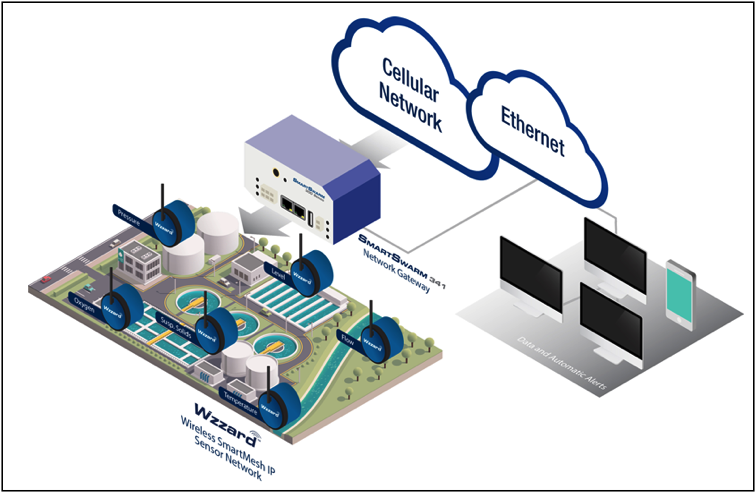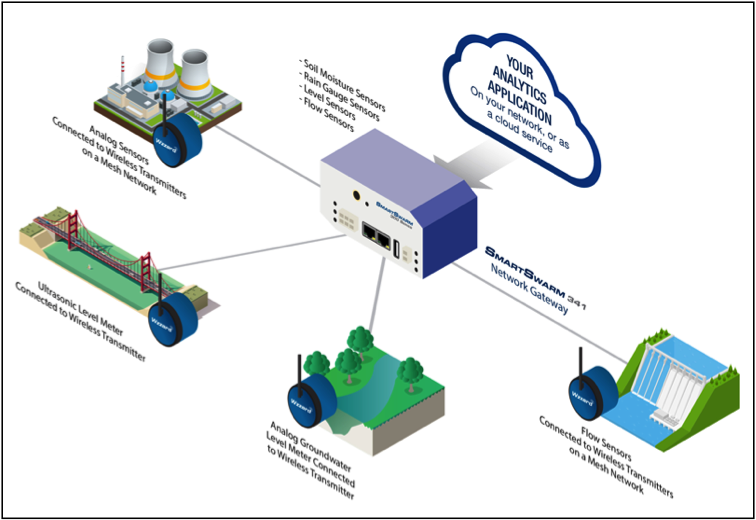Cities are updating their strategy for deploying smart, connected technology in the Public Right Of Way (ROW). Understanding how technology, combined with data, and engineering could redesign, augment or replace to create the City’s next-generation streetscape is critical in answering how the cities can meet its End Policies related to Public Safety, High Performing Government, Economic Development, and Financial Stability. Part of the efforts is identifying (1) which improved services can be delivered with (2) what smart technology that is deployed on (3) which City assets, and (4) funded by what business models.
In this post, we are presenting the case study of Smart IOT Water/Wastewater and Flood Monitoring solutions to address some items on the Smart Cities wishlist. The same concept can be extended for Energy Audits, Building Monitoring, and Smart Parking to support the city end policies. The Smart IOT Water/Wastewater and Flood Monitoring is a Smart City solution that falls in the Public Safety, and High Performing Government buckets, as well as Water and Storm system sensors. This solution can be extended to deliver the Exceptional City Services goal.
The Use Case
Water is critical for continuity of life whether for citizen, animal, and plants. With global climate change, the resources could be scarce at times and could be in access beyond the designs of the existing infrastructure. For living consumption, the disposal of household chemicals, and industrial waste impacts the quality and health of people.
Flooding and excessive rainfall can wreak havoc with indispensable assets and infrastructure. Water treatment plants, for example, are typically near a body of water, and thousands are located on flood plains. By tracking data like rainfall, ground saturation, and upstream water levels, industries and utilities can get early warnings about flooding and take action to protect their customers and equipment. In addition in an emergency situation, the First Responder will be able to issue emergency alerts and dispatch to service citizens.
In a water treatment plant, cities need to comply with an EPA requirement for monthly inflow reports. Supervisory Control and Data Acquisition Systems (SCADA) may be expensive and complex. The idea is to equip the plant with a sensor monitoring solution that would keep the CITY in compliance with EPA regulations at a price it could afford.

The Value
The value of the solution includes:
- Prepare city response to adverse flood level in advance
- Comply with EPA requirements for water and wastewater
- Reduce unnecessary overtime hours for critical city services
- Optimize the deployment of maintenance
- Increase citizen safety, prevent health issues from contaminated water resources and protect the environment

Solutions Capabilities
- Real-time access to data through a remote dashboard
- Data analytics not only detects failures, it predicts failures.
- Alert levels set to provide real-time text message or email notification of thresholds exceeded
- Diminished downtime and related costs.
- Machine condition data is made available wherever it is useful.
- Automatic alerts on your computer, tablet or smartphone
